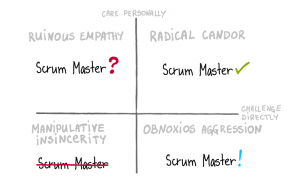Deep Personalization: The Next Step In CRM Effectiveness
by Pat Stroh , Op-Ed Contributor, July 21, 2017
Companies are striving to personalize their marketing. Personalizing the content, the timing, the channels, the contacts, the journeys and so forth. It’s effective and, indeed, necessary in a marketing environment increasingly dominated by always on digital channels. In fact, a quick Google search will produce lots of advice about “getting started with personalization,” “the top ways to personalize your marketing” and “which brands do personalization the best.” However, what’s lost are the reasons why it can be so effective and how it can become a competitive differentiator.
In addressing the effectiveness of personalization, you have to think of the distinction between shallow and deep personalization. Shallow personalization is raw data insertions into marketing communications, examples of which might include the customer’s name in the email salutation or birthday offers. The marketing content and timing are specific to the individual customer and not shared by other customers, customer segments, or personas.
In contrast, deep personalization aims at continually increasing customer insight and engagement. The crux of deep personalization is the use of data, lots of data, and the use of machine learning to find and learn underlying patterns that define the very complex lives and journeys of customers. More recently, however, the use of machine learning and artificial intelligence algorithms (in tandem with cloud and big data technology) is increasing our ability to understand, predict, and act on more complex patterns of customer behavior and preferences.
Take, for example, Stitch Fix, and its data-driven AI approach to understanding your clothing style. In combination with human “stylists,” Stitch Fix uses lots of data, feedback, and machine learning algorithms to identify the underlying patterns that describe your clothing style preferences. Their platform learns and changes over time. Indeed, their approach is instructive to us all in that personalization is deep – lots of data, complex patterns, and myriad outputs. That depth of personalization is what truly drives sustained customer engagement.
In fact, as dynamic content, machine-based creative and digital’s share of customer experience become more widespread, deep personalization will render the shallower tactics of personalization obsolete, ineffective, and non-competitive. Yes, shallow personalization is a step beyond mass or segment-based marketing. But relatively conventional analytics techniques can deepen that personalization by incorporating more inputs into the content, channels and timing of marketing contacts. Marketers need to reexamine how they do personalization, and adopt stronger analytical approaches.
Furthermore, the break-through capabilities of machine learning and artificial intelligence will expand deep personalization in a way that will challenge conventional techniques. Therefore, it is also advisable marketers leverage those technologies and uses as well. By doing so, companies will step beyond their less effective competitors by using personalization as a way to create sustainable, not temporary, lifts in customer engagement and business results.
MediaPost.com: Search Marketing Daily
(61)
Report Post






